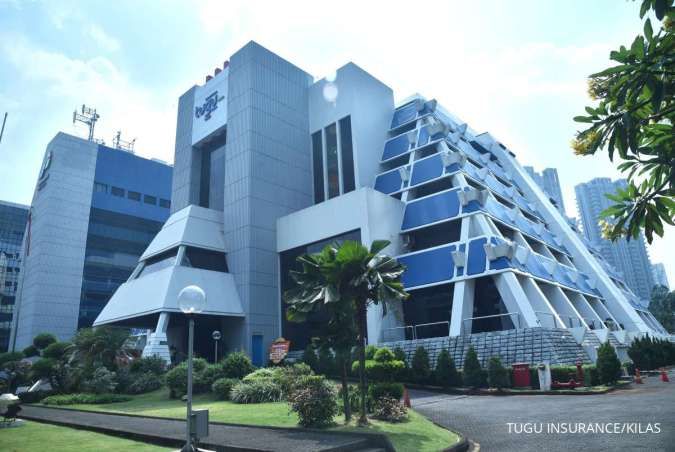JAKARTA. Despite a low selling price, the government will sell some cargoes of liquefied natural gas (LNG) through the spot market this year because of weak domestic consumption. Upstream Oil and Gas Regulatory Special Task Force (SKKMigas) chief Amien Sunaryadi said as many as 25 cargoes of LNG were still uncommitted this year, meaning that the cargoes should be offered through the spot market. “If we cannot market the cargoes well, the [domestic] gas production should be halted and gas fields must be shut down,” Amien said. Last year, as many as 23.5 shipments of LNG were uncommitted, according to SKKMigas’ report. The uncommitted cargoes, also known as excess cargoes, were the result of expired contracts of 40 LNG cargoes from the Badak plant in 2013. Another contract with a Korean buyer in October had also expired leaving 20.4 cargoes unsold — adding to excess cargo. Out of the total 23.5 uncommitted LNG cargoes last year, as many as 15 cargoes were sold at the spot market. The remaining cargoes had forced production halts in several oil fields. Failures to sell the LNG cargoes on the spot market were mainly caused by price mismatch. Following the global oil-price decline, global gas prices have also been under pressure as most LNG is linked to crude oil prices. “Buyers are bargaining for US$8 per mmbtu [million British thermal unit] while we want to sell at $10 per mmbtu,” Amien said. Indonesian LNG is marketed by Pertamina, following SKKMigas’ appointment. The government will need to halt production in more gas fields if the LNG cargoes have no buyers. Absorption by domestic users is also unlikely due to poor infrastructure for gas deliveries. Last year, state electricity firm PLN and gas distributor PT Perusahaan Gas Negara (PGN) were unable to absorb one cargo of LNG out of total allocated cargoes partly due to the delayed operation of gas facilities. The price of LNG in Japan, the world’s biggest buyer, is estimated to drop 35 percent this year, according to London-based consultant Energy Aspects Ltd. as quoted by Bloomberg. The price of LNG is expected to further drop as there are several months of lag time for the oil-price drop to impact LNG prices. The oil price was close to the lowest level in six years following figures of rising inventory in US crude to the highest level since August 1982, Bloomberg reported. The benchmark West Texas Intermediate for March delivery was at $44.41 per barrel at the New York Mercantile Exchange. Another benchmark, the Brent crude was at $48.56 per barrel on the London-based ICE Futures Europe exchange for March settlement. The rising US supply, driven by the shale-oil boom and the refusal of oil producers to lower their output, has created a global glut that has pushed down prices. The number of uncommitted LNG cargoes in the country will be higher than SKKMigas’ estimation as the target for gas output from domestic fields will be lifted higher. House of Representatives Commission VII overseeing the energy sector decided on Thursday that gas output would stand at 1,221 thousand barrel of oil equivalent per day (mboepd), a similar level to last year, although the Energy and Mineral Resources Ministry proposed the revised output at 1,165 mboepd. Extra effort will be needed to meet the 1,221 mboepd gas output target, as the declining price will push oil and gas contractors to reconsider investment to boost output, SKKMigas deputy for finance Budi Agustyono said. “We will need to optimize remaining gas output to the Arun facility [gas from the North Sumatra Offshore block] if we want to meet the target,” he added. (Raras Cahyafitri)
Govt to sell LNG through spot market
JAKARTA. Despite a low selling price, the government will sell some cargoes of liquefied natural gas (LNG) through the spot market this year because of weak domestic consumption. Upstream Oil and Gas Regulatory Special Task Force (SKKMigas) chief Amien Sunaryadi said as many as 25 cargoes of LNG were still uncommitted this year, meaning that the cargoes should be offered through the spot market. “If we cannot market the cargoes well, the [domestic] gas production should be halted and gas fields must be shut down,” Amien said. Last year, as many as 23.5 shipments of LNG were uncommitted, according to SKKMigas’ report. The uncommitted cargoes, also known as excess cargoes, were the result of expired contracts of 40 LNG cargoes from the Badak plant in 2013. Another contract with a Korean buyer in October had also expired leaving 20.4 cargoes unsold — adding to excess cargo. Out of the total 23.5 uncommitted LNG cargoes last year, as many as 15 cargoes were sold at the spot market. The remaining cargoes had forced production halts in several oil fields. Failures to sell the LNG cargoes on the spot market were mainly caused by price mismatch. Following the global oil-price decline, global gas prices have also been under pressure as most LNG is linked to crude oil prices. “Buyers are bargaining for US$8 per mmbtu [million British thermal unit] while we want to sell at $10 per mmbtu,” Amien said. Indonesian LNG is marketed by Pertamina, following SKKMigas’ appointment. The government will need to halt production in more gas fields if the LNG cargoes have no buyers. Absorption by domestic users is also unlikely due to poor infrastructure for gas deliveries. Last year, state electricity firm PLN and gas distributor PT Perusahaan Gas Negara (PGN) were unable to absorb one cargo of LNG out of total allocated cargoes partly due to the delayed operation of gas facilities. The price of LNG in Japan, the world’s biggest buyer, is estimated to drop 35 percent this year, according to London-based consultant Energy Aspects Ltd. as quoted by Bloomberg. The price of LNG is expected to further drop as there are several months of lag time for the oil-price drop to impact LNG prices. The oil price was close to the lowest level in six years following figures of rising inventory in US crude to the highest level since August 1982, Bloomberg reported. The benchmark West Texas Intermediate for March delivery was at $44.41 per barrel at the New York Mercantile Exchange. Another benchmark, the Brent crude was at $48.56 per barrel on the London-based ICE Futures Europe exchange for March settlement. The rising US supply, driven by the shale-oil boom and the refusal of oil producers to lower their output, has created a global glut that has pushed down prices. The number of uncommitted LNG cargoes in the country will be higher than SKKMigas’ estimation as the target for gas output from domestic fields will be lifted higher. House of Representatives Commission VII overseeing the energy sector decided on Thursday that gas output would stand at 1,221 thousand barrel of oil equivalent per day (mboepd), a similar level to last year, although the Energy and Mineral Resources Ministry proposed the revised output at 1,165 mboepd. Extra effort will be needed to meet the 1,221 mboepd gas output target, as the declining price will push oil and gas contractors to reconsider investment to boost output, SKKMigas deputy for finance Budi Agustyono said. “We will need to optimize remaining gas output to the Arun facility [gas from the North Sumatra Offshore block] if we want to meet the target,” he added. (Raras Cahyafitri)




